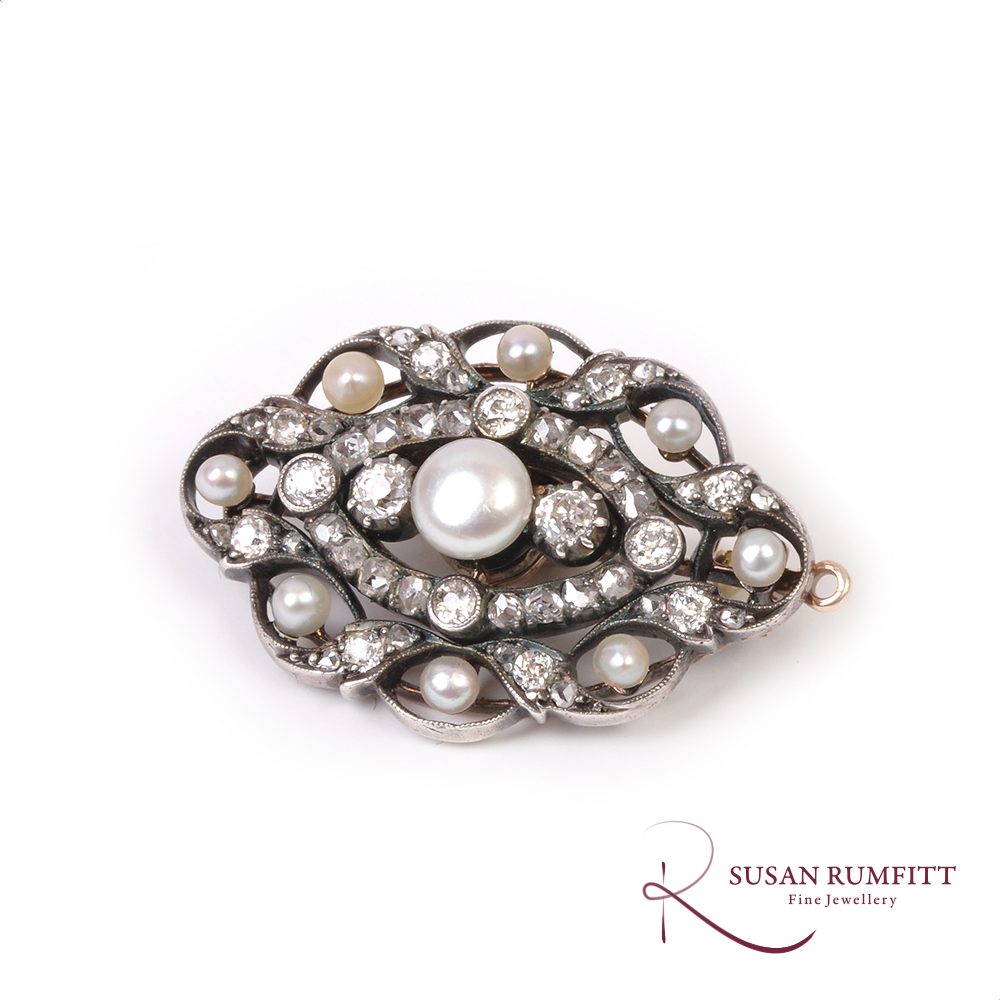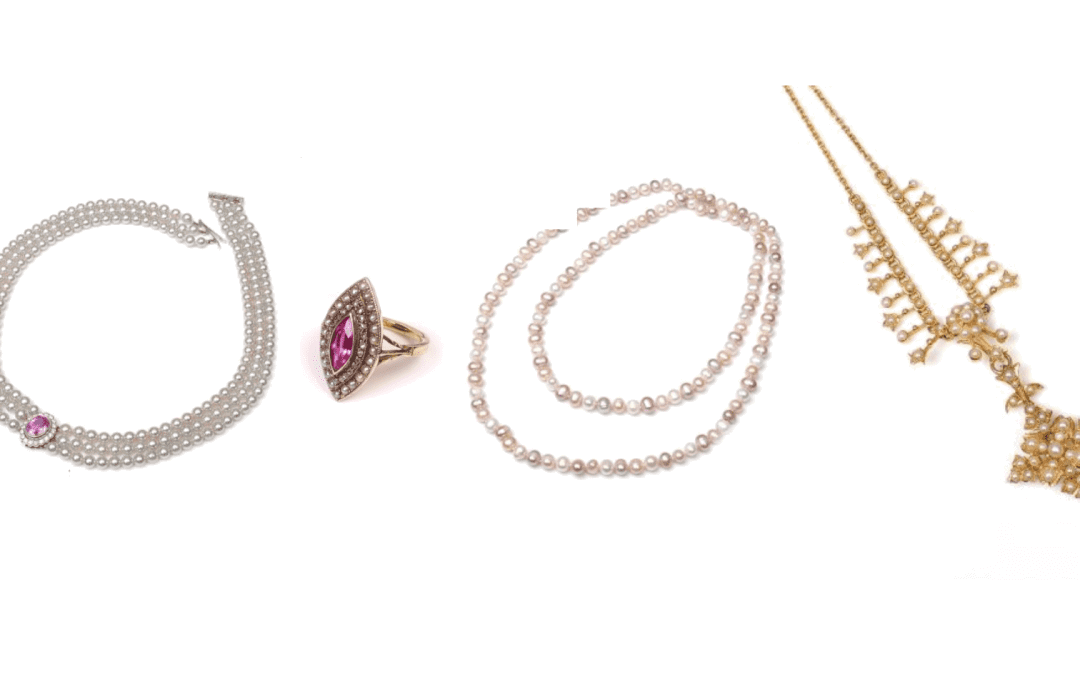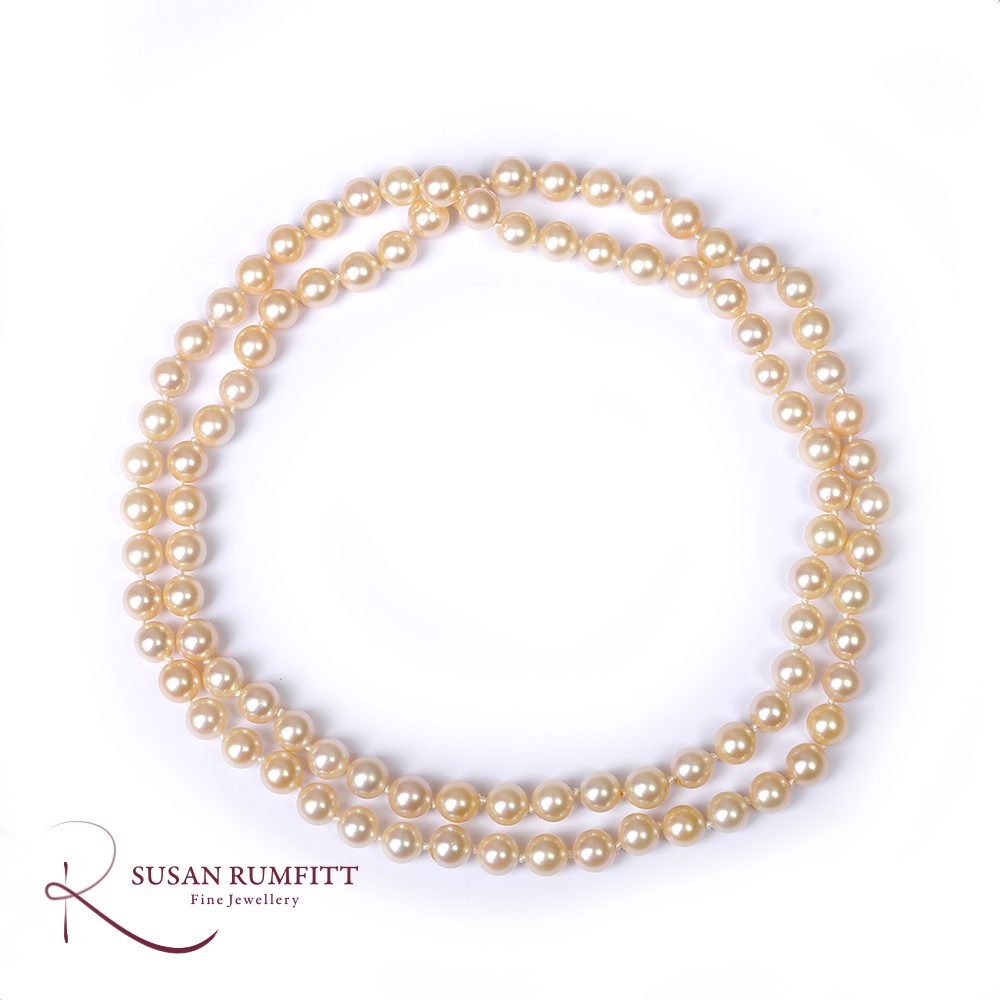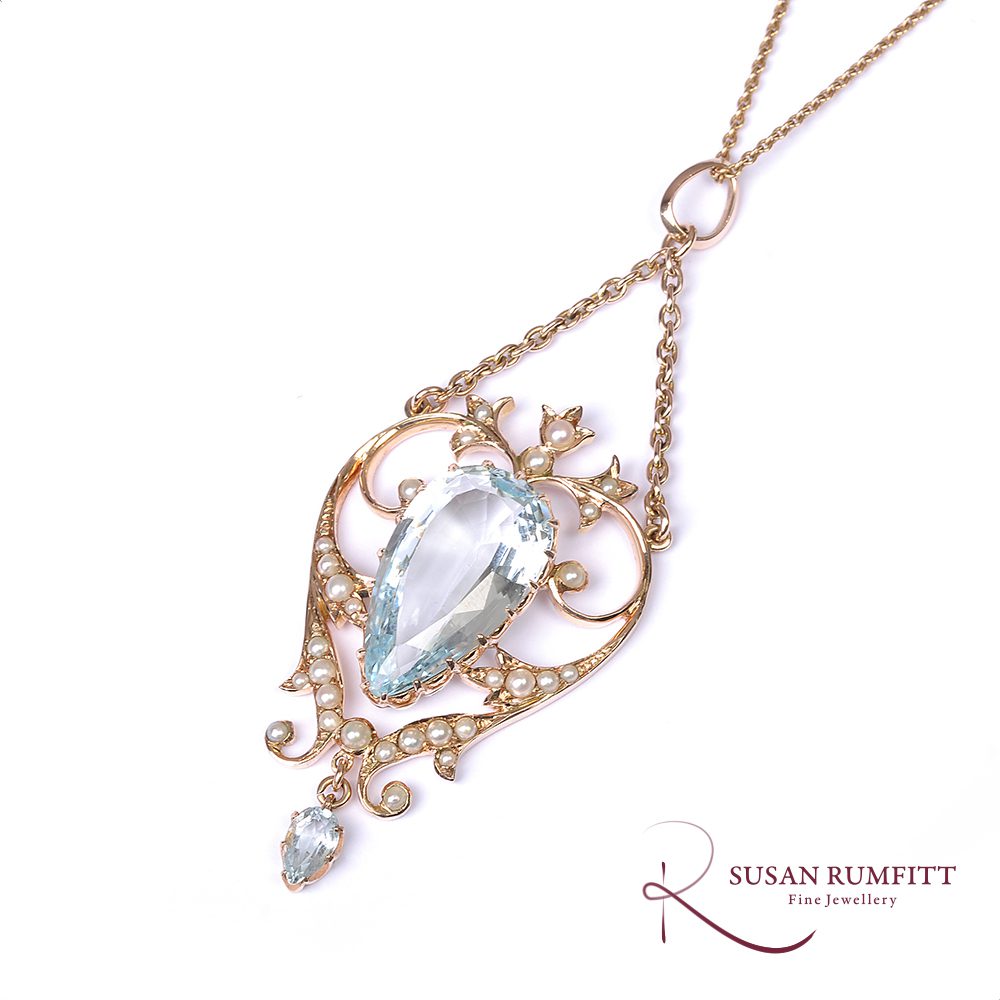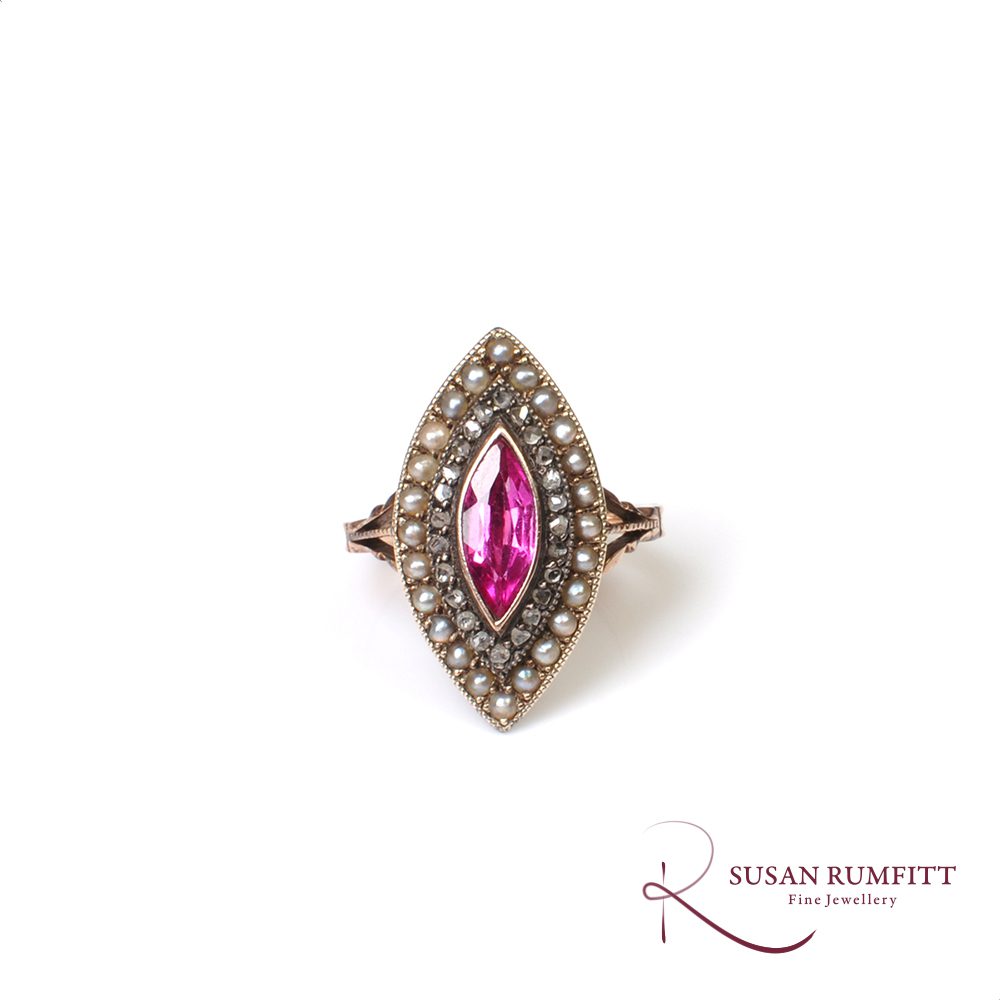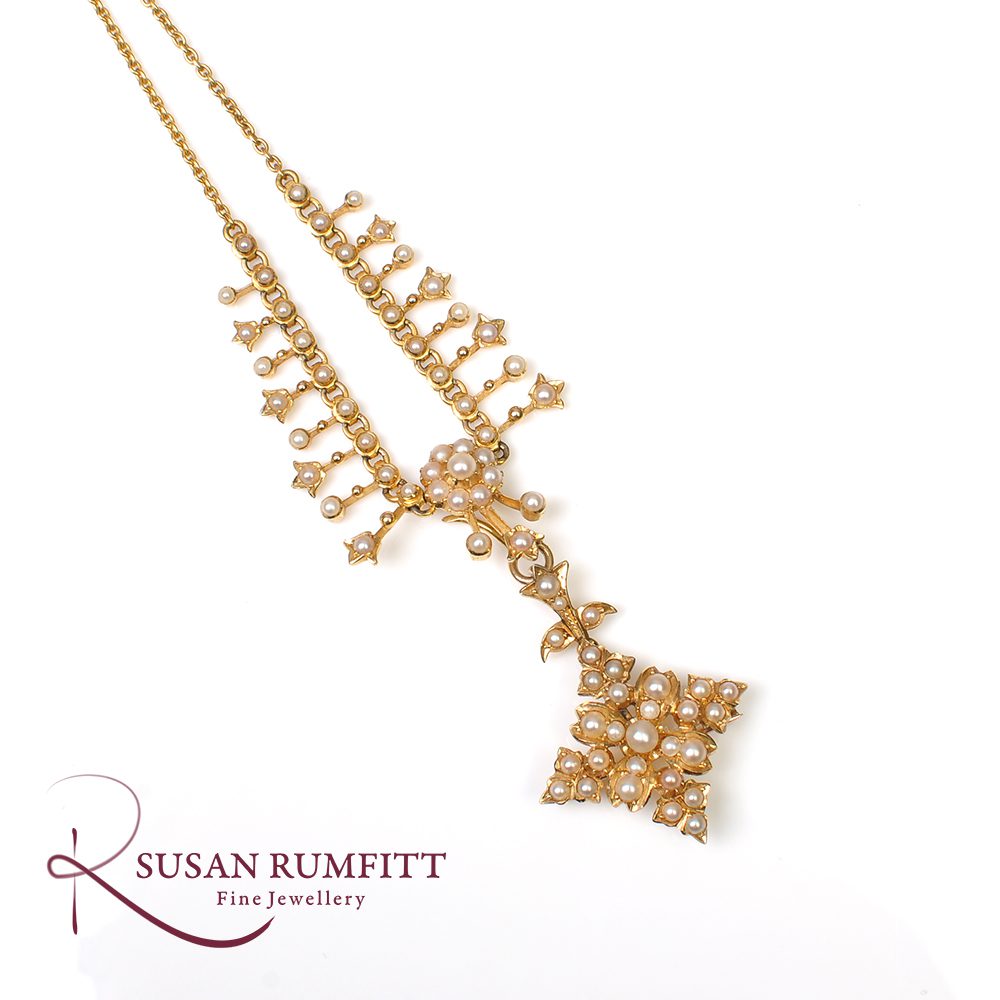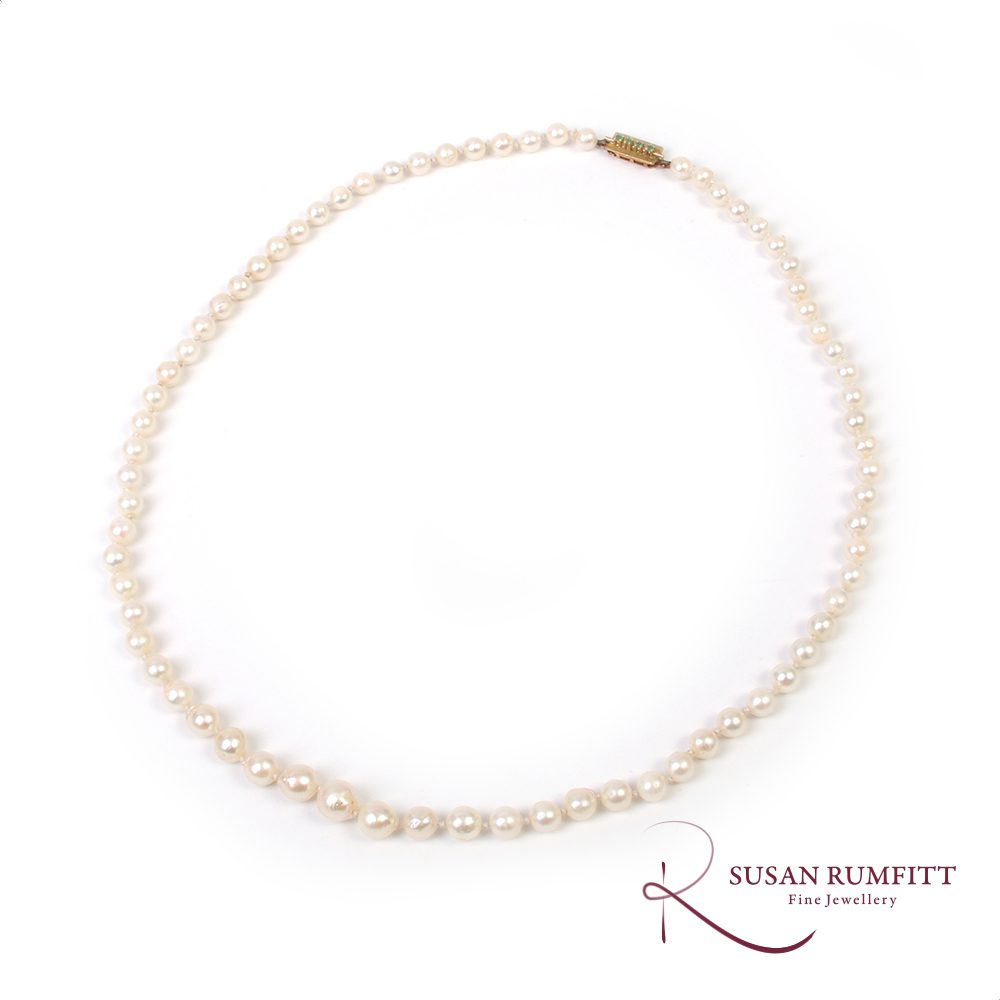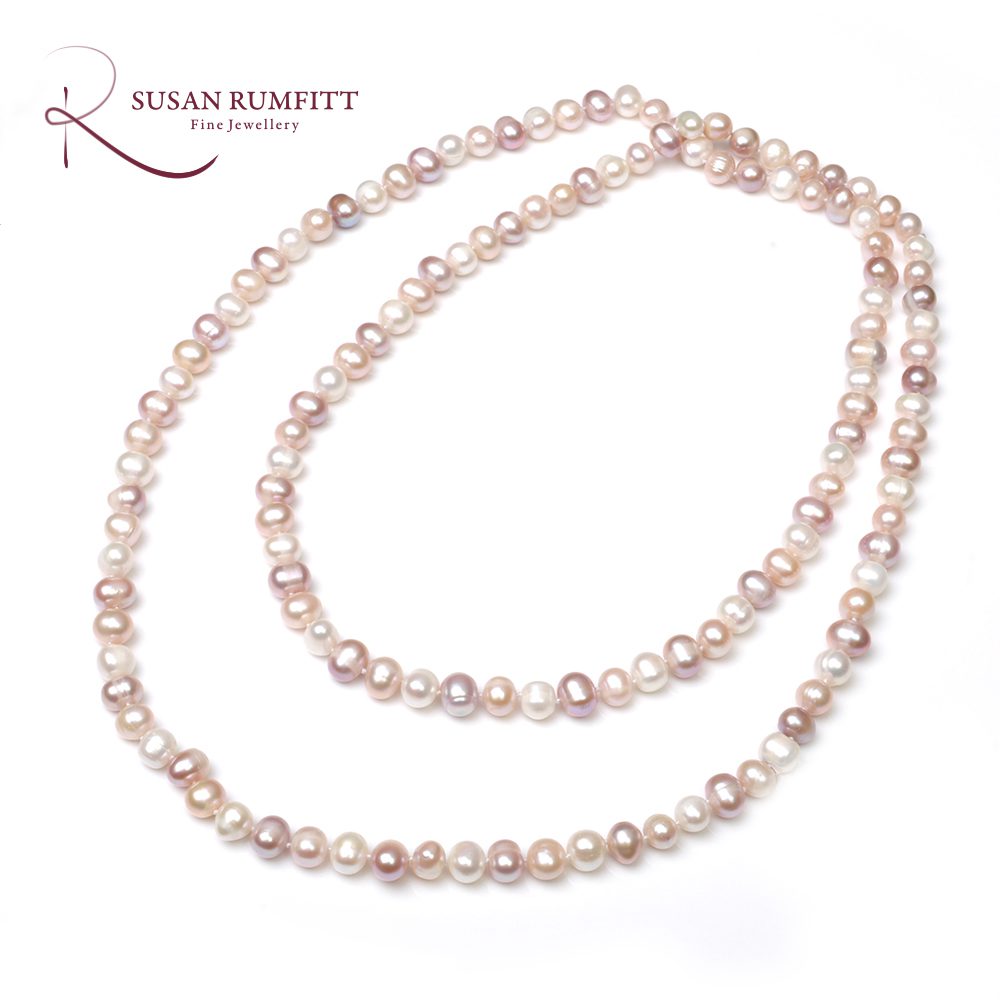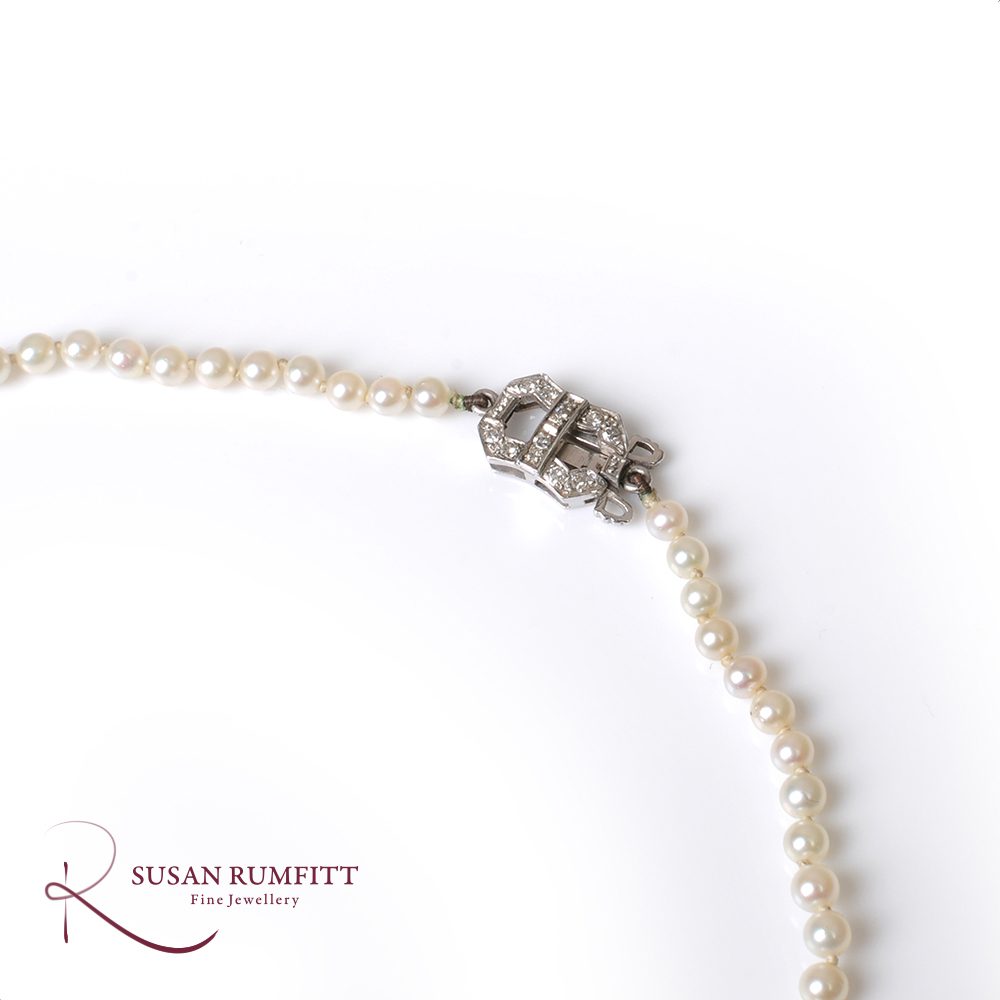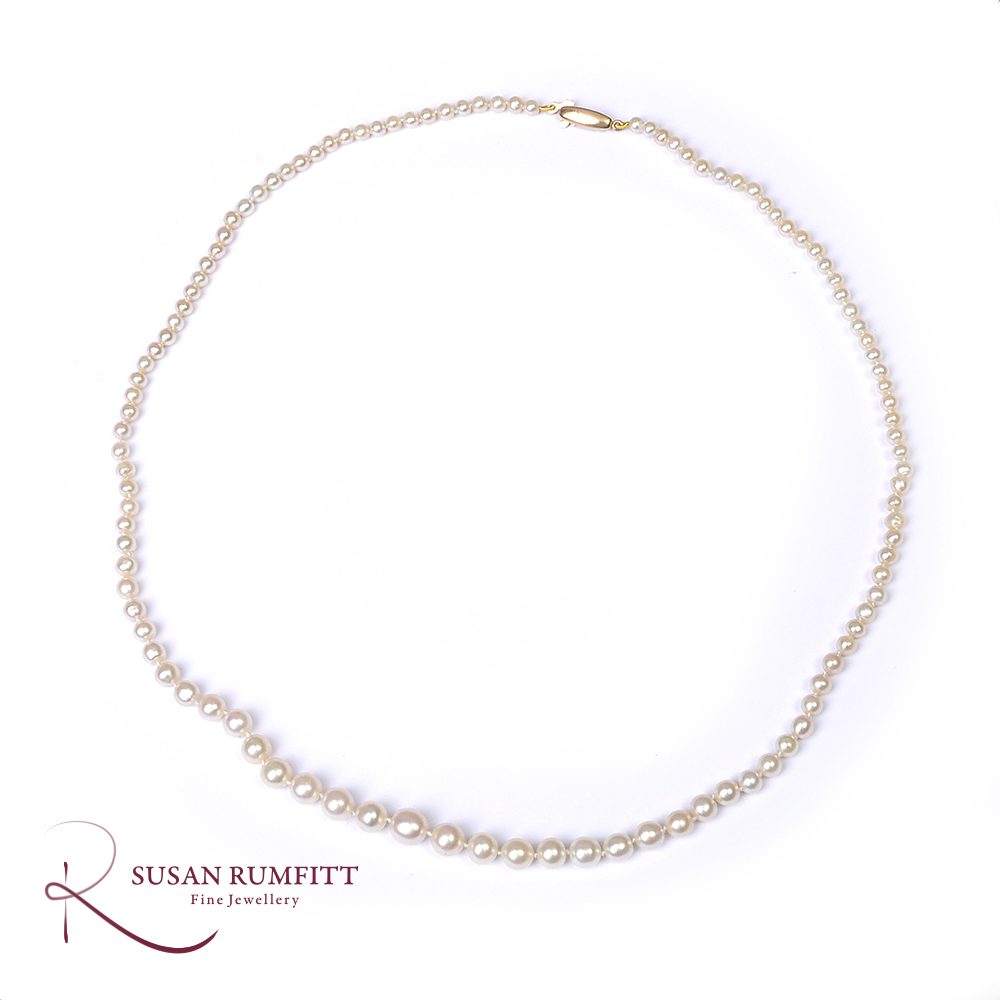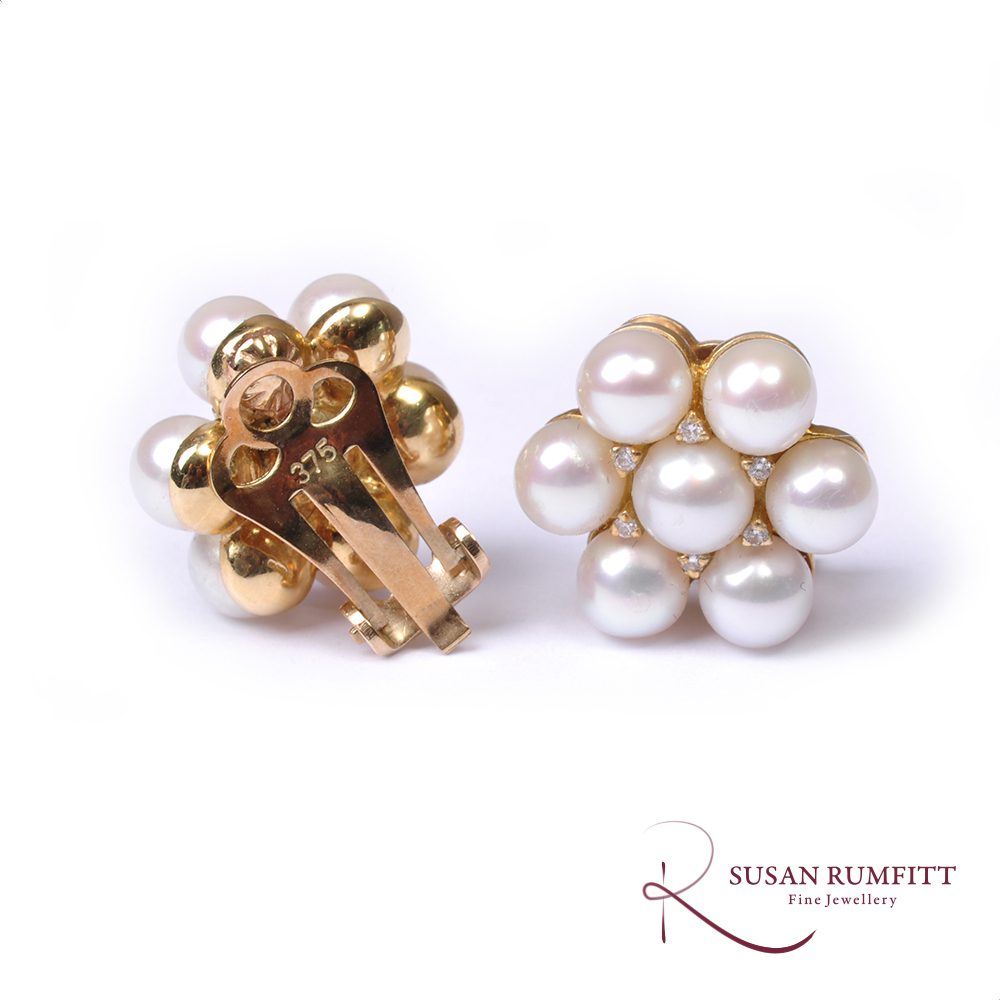‘The pearl is the queen of gems and the gem of queens’ – Grace Kelly
The birthstone of June is a unique and timeless gem: pearl. Pearls are exclusive among gems as they are found in their alluring natural state, gifts of nature that require no fashioning to bring out their beauty. Consequently, they have been treasured for millennia, far longer than any other gem material.
Pearl history and associations
For their soft white iridescent glow, pearls have long been linked with the moon. Indeed, some eastern cultures believed them to be dewdrops filled with moonlight that fall at night and are eaten by oysters. In ancient times the Greeks regarded pearls as tears of joy from the goddess Aphrodite, while the Romans associated them with Venus who was also born of a seashell, the two ideas firmly connecting pearls to love and beauty. Although pearls naturally occur in a variety of colours, they are most associated with white, again almost unique among gem materials. As a result, pearls became a symbol for many of the qualities western cultures equate with white: purity, virtue and innocence, as well as modesty and elegance. It’s no wonder that they are a traditional gem worn for weddings in many cultures.
However, pearls have most been desired for their association with wealth and luxury. Natural pearls are incredibly rare, with only one in ten thousand shells containing a pearl and only a small percentage of these being a desirable size, shape or colour. Consequentially, it requires an exceptional amount of resources to secure a single desirable natural pearl, let alone enough for a matched necklace. Accordingly, to wear pearls was to display your wealth and power, linking them to these attributes as certainly as with beauty. It was to secure the freshwater pearls of Scotland that Julius Caesar attempted the invasion of Briton in 55BCE, and the marine pearls off the coast of Venezuela were in no small part responsible for Christopher Columbus returning to that area.
The value of pearls
For the longest time pearls were so highly valued that only royalty and the nobility could afford them. Queen Elizabeth I famously draped herself in pearls both as a symbol of her power and wealth, but also of her virginity and virtue. One of the world’s most famous gems, ‘La Peregrina’, is a pearl worn by Mary Tudor, Marie Antoinette and Elizabeth Taylor. Whilst large pearls were, of course, the most desirable, small seed pearls didn’t go to waste, adorning every article of jewellery possible.
Towards the end of the 19th century pearl prices were at an all-time high. While the princes of India and Persia exercised their historical right to the pick of the harvest from the Persian Gulf, affluent industrialists rivalled the aristocracy in wealth and increased the appetite for pearls to incredible levels. To meet this demand, the pearl beds were overfished in all areas which meant supply waned, causing prices to rise.
The development of cultured pearls
As the 1900s began Mikimoto in Japan, after decades of research, began producing round cultured pearls. Before this there were three main types of ‘pearl’: freshwater pearls usually smaller and whiter, marine pearls that were larger with a higher lustre, and faux ‘pearls’ designed to imitate pearls.
Faux or fake ‘pearls’ are made from any material, from glass to plastic, that can look a bit like a pearl. Natural pearls are produced when a mollusc shell is damaged, and the cells that produce the nacre (the mother of pearl that lines the shell), create a pearl sac around the damage. The pearl sac then goes on to build up layers and layers of nacre over many years, and this forms the pearl. The longer the pearl is in the shell the bigger it grows, the thickness of the nacre creating the incomparable lustre of natural pearls.
Marine cultured pearls are made by opening a shell, placing a bead and a piece of living tissue inside the host mollusc. The tissue then forms a pearl sac around the bead, coats it with nacre, and after a couple of years a cultured pearl can be harvested.
So, what were Mikimoto’s pearls to be called? They weren’t faux or fake, as they were made in oysters and contained layers of nacre. They were ‘real’ or ‘genuine pearls’ but, equally, they were reproducible, created to order, not the fantastically rare natural phenomenon that is a pearl. International court cases raged, with all sides fighting for economic interests and reputation.
In the end it was decided that Mikimoto’s pearls must be described as cultured pearls by law, and to use ‘real’ or ‘genuine’ to describe them was ruled out. However, other factors took over to cease the fishing for natural pearls. The beds were fished out, the local workforce had found more profitable labour, and the global economic crash ensured that no one had the money for natural pearls anyway. Whilst pearls were as desirable as always, being the perfect companion to every outfit from a Chanel little black dress to a twinset (whether all-American sweater set or country tweeds), natural pearls were no longer being produced and the cultured pearl was dominant.
In some regards it was cultured pearls’ popularity that was their downfall. Mass produced, they dropped in both price and quality, losing the allure of wealth and luxury that had made them so very desirable. Alongside this it was now more than 60 years since new natural pearls had been available, and the splendour and prestige they carried had slipped out of the public consciousness. Happily today, marine cultured pearls have regained their quality with South Sea and Akoya pearls both fiercely protecting their reputation and the environment in which they grow, while good quality freshwater pearls are produced in a vast array of fun shapes and colours.
With these improvements we’ve seen pearls enjoying a resurgence of popularity, with youngsters wearing them in a fresh new way. Increased environmental awareness infers ethical status and prestige on sustainably produced cultured pearls, and the increasing demand for rarity through antiquity has brought natural pearls to a connoisseur market.
Pearls at Susan Rumfitt Fine Jewellery
We have a lovely collection of pearls in our gallery in the centre of Harrogate, including the following:
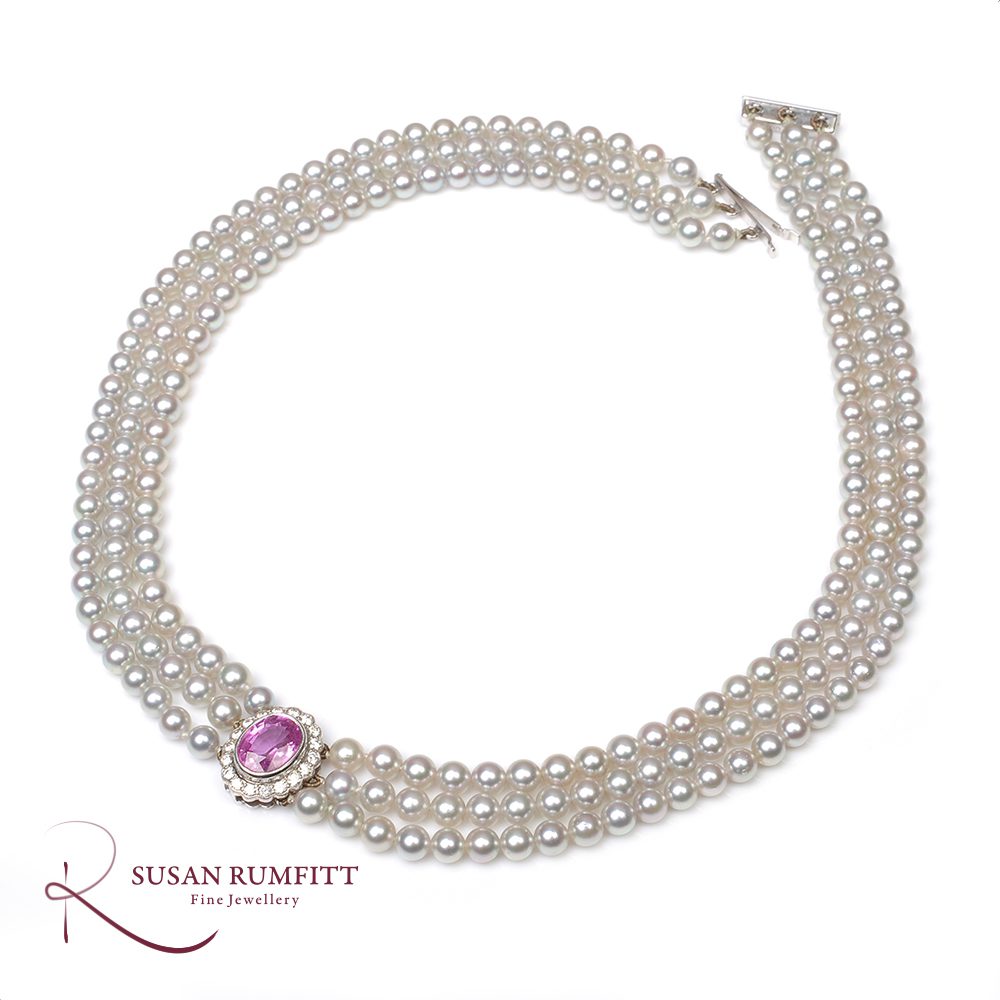
A Pink Sapphire, Diamond and Cultured Pearl Necklace
